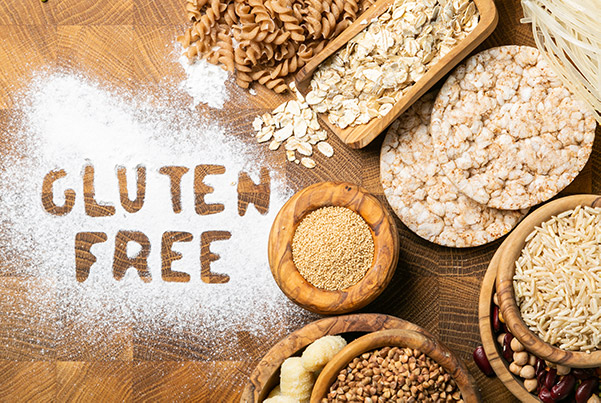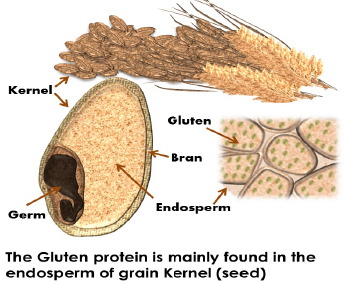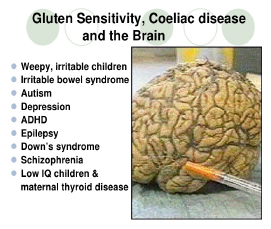
By Debbie Ulrich, CEnKP1, C.N.H.P, C.S.N
Gluten can be a very difficult issue to understand. When I suggest a gluten-free diet to someone, I am often asked, “Is it ok to eat a little gluten?” My response typically is: “That is like asking me if it is ok to eat a little poison or a lot of poison.”
I understand the resistance to eliminating gluten, as I experienced the same resistance when it was first suggested I become gluten-free many years ago. After doing research on what gluten actually is, I decided it was important to eliminate it from my diet. So, I am going to share the findings of my research in this article. Hopefully this information will enable you to better understand why this has been suggested to YOU and why this might be a good choice for you.
As you read this article you will find I include so much more information than defining “what gluten is.” This is because as I embarked on this journey defining ‘what gluten is’ my initial goal was to enable you to better understand gluten. During this process I uncovered and learned some fascinating information which I thought relevant enough to include in this article.
Here is some basic background information.
What is Gluten?
Gluten Definition
Gluten is a protein found in most grains. In Latin, gluten means “glue” and that’s exactly what it is: two proteins, gliadin and glutenin, stuck together. Gluten is a mixture of hundreds of distinct proteins within the same family, although it is primarily made up of two different classes of proteins: gliadin, which gives bread the ability to rise during baking, and glutenin, which is responsible for dough’s elasticity. Gluten helps foods maintain their shape, acting as glue that holds food together. Not all grains contain gluten.

What foods contain Gluten?
Gluten is a general name for the proteins found in wheat, wheatberries, durum, emmer, semolina, spelt, farina, farro, graham, barley, rye, KAMUT® (also known as Khorasan rye), and triticale (a cross between wheat and rye). This means it is in a myriad of products, from the usual suspects like bread, bagels and cereals to those that are not nearly as obvious. Sometimes you need to read, then think, about what is in the product’s ingredients list. For example, meat substitutes, bouillon cubes, licorice, condiments, granola, sauces, gravies and lip balm may have gluten ingredients in them. This list serves as a partial list only. Reading the ingredients listed on the label is key to ensuring you are purchasing ‘gluten free’ foods. Many manufacturers have added the terms “GF” and/or “Gluten Free” to their labels to educate the consumer about the product not containing gluten.
How does gluten affect the body?
With celiac disease, the villi – tiny, finger-like projections in the small intestine that act as gatekeepers to the rest of the body – reject gluten for some unknown reason. This rejection can affect the absorption rate of many other nutrients that are key to our wellbeing, including calcium, iron and vitamin A.
The gluten found in wheat, barley, rye and triticale (a cross between wheat and rye) can trigger serious health problems or other insensitivities. While other grains such as corn, rice and quinoa also contain gluten, they don’t seem to cause the same problems as wheat, barley, rye and triticale. Because wheat, rye, barley and foods made from these are so common, removing them from your diet likely changes your overall intake of fiber, vitamins and other nutrients. Therefore, it’s important to choose your foods wisely to meet your overall nutritional needs in addition to knowing how to replace the foods you are eliminating. Gluten can cause serious health related issues such as:
- Celiac disease is a condition in which gluten triggers immune system activity that damages the lining of the small intestine. When gluten is ingested, the body mounts an immune response that attacks the small intestine which destroys the lining of the small intestines. These attacks lead to damage of the villi,
small fingerlike projections that line the small intestine and promote nutrient absorption. This reaction and damage reduce the area for absorbing virtually all nutrients and over time this damage prevents the absorption of nutrients from food. Celiac disease is an autoimmune disorder. - Non-celiac gluten sensitivity causes some signs and symptoms associated with celiac disease — including abdominal pain, bloating, diarrhea, constipation, “foggy brain,” rash or headache — even though there is no damage to the tissues of the small intestine. Studies show that the immune system plays a role in this response.
- Cancers can develop with people with celiac disease. The later the age of diagnosis, the greater chance of developing some cancers if gluten is continued to be consumed without discretion.
- Gluten ataxia is an autoimmune disorder which affects certain nerve tissues and causes problems with muscle control and voluntary muscle movement.
- Wheat allergy, like other food allergies, is the result of the immune system mistaking gluten or some other protein found in wheat as a disease-causing agent, such as a virus or bacteria. The immune system creates an antibody to the protein, prompting an immune system response that may result in congestion, breathing difficulties and other symptoms.
- Autoimmune disorders refer to a condition that occurs when the body’s immune system, which is our infection-fighting system, mistakenly attacks and destroys the body’s tissue.
- Other serious conditions have a greater chance of developing such as other autoimmune disorders.
The following diagram lists other possible symptoms and/or conditions which can result from gluten sensitivity and ingestion.

A gluten-free diet is essential for managing signs and symptoms of celiac disease and other medical conditions associated with gluten.
A gluten-free diet is also popular among people who haven’t been diagnosed with gluten-related medical conditions. This is because the claimed benefits of eliminating gluten include improved health, weight loss, increased energy, improved mental clarity and improved cognitive ability.
How does gluten cause these issues?
Read the other half of this article on page 4 by downloading the complete PDF here.